.jpg )
OUR DISCOVERY HSE Si6 doesn’t feel so big anymore. We are surrounded by giants, in the form of huge sand dunes that tower above the vehicle, dwarfing it and the rest of the Discovery convoy we are part of.
It’s day two of the 2017 Land Rover Experience Peru, and our group of Discoverys and Range Rover Sports are exploring the spectacular Sechura Desert just inland from Peru’s west coast tourist hub of Pisco.
 It’s midday, and the sand is both hot and soft. These usually challenging driving conditions are, today, not so much – raising the Discovery’s suspension and shifting into ‘sand’ mode has allowed drivers to treat this terrain with some disdain, albeit still with the required caution.
It’s midday, and the sand is both hot and soft. These usually challenging driving conditions are, today, not so much – raising the Discovery’s suspension and shifting into ‘sand’ mode has allowed drivers to treat this terrain with some disdain, albeit still with the required caution.
The driving experience is best described using that oft-used cliché of a roller-coaster ride, with our Discovery convoy driving up, down and alongside some mightily impressive dunes for an afternoon. In short, it’s cracking fun, and a brilliant way to kick off a week of exploring this amazing South American country.
GAINING EXPERIENCE
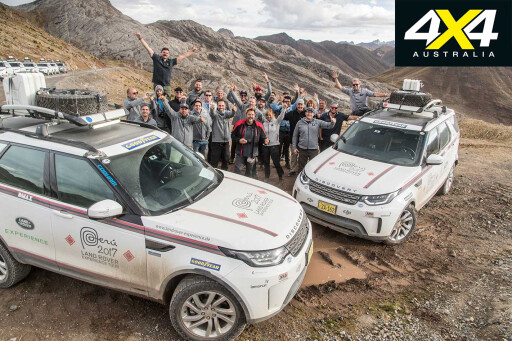 The Land Rover Experience (LRE) Peru is the latest in a long and distinguished line of trips. The LRE, ahem, experience, has been running since 2000, with the initial tour based in Jordan. Since then, LRE has guided modern-day four-wheel drive explorers through a number of unique global destinations including Nepal, Iceland, Malaysia and Australia.
The Land Rover Experience (LRE) Peru is the latest in a long and distinguished line of trips. The LRE, ahem, experience, has been running since 2000, with the initial tour based in Jordan. Since then, LRE has guided modern-day four-wheel drive explorers through a number of unique global destinations including Nepal, Iceland, Malaysia and Australia.
This Peru journey clocks in as number 12, but is, for its initial foray anyway, a media and competition-winner trip only. Our group comprises a mix of international journalists and competition winners from the USA (Land Rover US ran an off-road driving competition, with the four winners scoring seats on this Peru 2017 media trip), all united with a passion for adventure and Land Rovers.
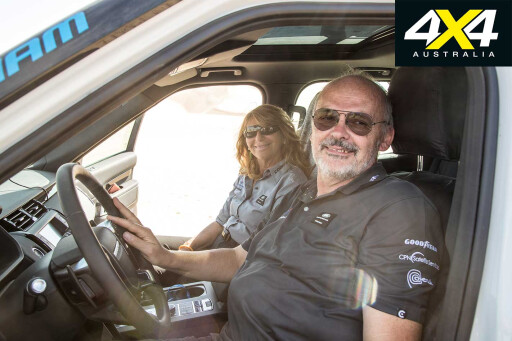 Land Rover’s lengthy history of exploration and adventure can sometimes be forgotten in these days of brand ambassadors such as Posh Spice, Aussie surfers and ex-rugby internationals. This trip (and its predecessors) provides a reminder of that wilder, muddier heritage.
Land Rover’s lengthy history of exploration and adventure can sometimes be forgotten in these days of brand ambassadors such as Posh Spice, Aussie surfers and ex-rugby internationals. This trip (and its predecessors) provides a reminder of that wilder, muddier heritage.
Plus, we’ve timed it perfectly, as the all-new Discovery, in SE and HSE Si6 stock form (bar the Goodyear DuraTrac A/T tyres they are shod with, as well as some ARB accessories including air compressor, swags and fridges), is our expedition rig for the next week, book-ended by two Range Rover Sports carrying camera/video crew and trip guides. Did I hear somebody just say “you lucky bastard”?
START ME UP
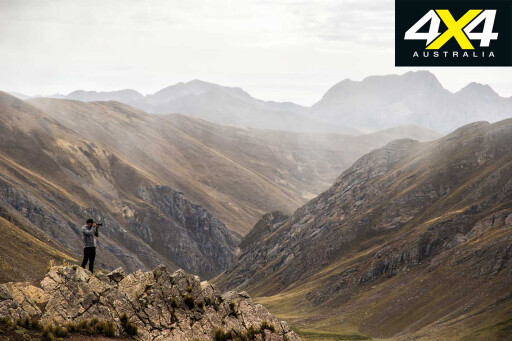 Befitting an ‘adventure’, our trip actually starts two days before we jump in the vehicles, with the group flying in from all corners of the globe to the Peruvian adventure city of Cusco. From here, we jump aboard a bus, a train, and then another bus on the way to the must-see World Heritage site of Machu Picchu.
Befitting an ‘adventure’, our trip actually starts two days before we jump in the vehicles, with the group flying in from all corners of the globe to the Peruvian adventure city of Cusco. From here, we jump aboard a bus, a train, and then another bus on the way to the must-see World Heritage site of Machu Picchu.
It’s a great day, with the train ride back bringing the first humorous moment of the trip as we manage to lose one of our international journos, who missed the return train.
 Unknown to us at the time, he had in fact jumped on the next available train and scored big-time; while we got by on peanuts and water in our cramped seats, he was treated to an in-carriage theatre group performance, a bottle of wine, a full three-course meal, and oodles of leg-room. Needless to say, we brought this up with LRE management once we heard his tale of ‘misfortune and hardship’.
Unknown to us at the time, he had in fact jumped on the next available train and scored big-time; while we got by on peanuts and water in our cramped seats, he was treated to an in-carriage theatre group performance, a bottle of wine, a full three-course meal, and oodles of leg-room. Needless to say, we brought this up with LRE management once we heard his tale of ‘misfortune and hardship’.
Speaking of hardship, if you’d told me I would be flying from Cusco to the Peruvian coastal tourist town of Pisco aboard my own Boeing 737, I would have labelled you mad. But, that’s exactly how our first driving day started.
 With around 30 of us on board, the 737 felt decidedly spooky in its emptiness, but that sensation was soon forgotten and substituted with awe as we climbed up and away from Cusco and started crossing the rugged, snow-clad Andes.
With around 30 of us on board, the 737 felt decidedly spooky in its emptiness, but that sensation was soon forgotten and substituted with awe as we climbed up and away from Cusco and started crossing the rugged, snow-clad Andes.
This huge mountain range and its jagged icy peaks offered a massive contrast to our final destination on the coast; the landscape around Pisco is decidedly barren, with the desert sands encroaching to where the land meets the Pacific Ocean.
 As mentioned, the desert driving experience is fantastic and only spoilt slightly by one inattentive journo taking the ‘momentum’ part of sand driving to the extreme and shoving a Discovery nose-first at the bottom of a relatively sharp drop-off, before ignoring the potential for further disaster and making an impressive mess of the front bumper and radiator as they continued up a rise.
As mentioned, the desert driving experience is fantastic and only spoilt slightly by one inattentive journo taking the ‘momentum’ part of sand driving to the extreme and shoving a Discovery nose-first at the bottom of a relatively sharp drop-off, before ignoring the potential for further disaster and making an impressive mess of the front bumper and radiator as they continued up a rise.
 It is here we say thanks to those travelling with LRE – the expedition mechanic and a few of the guides, including our expedition doctor – who get stuck into the repairs and have the broken-nose Discovery back and sort-of running within an hour.
It is here we say thanks to those travelling with LRE – the expedition mechanic and a few of the guides, including our expedition doctor – who get stuck into the repairs and have the broken-nose Discovery back and sort-of running within an hour.
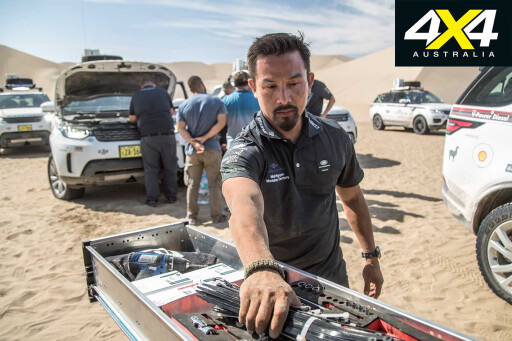 The rest of the desert foray is at a slightly less excitable pace as we continue in a northerly direction, the distant lower ramparts of the Andes starting to peak through the desert dust clouds. We return to our coastal digs for the night, with that view hinting at what we can expect to be driving through tomorrow when we track north from Pisco. As it turned out, it was just a very small tease.
The rest of the desert foray is at a slightly less excitable pace as we continue in a northerly direction, the distant lower ramparts of the Andes starting to peak through the desert dust clouds. We return to our coastal digs for the night, with that view hinting at what we can expect to be driving through tomorrow when we track north from Pisco. As it turned out, it was just a very small tease.
TOP IT OFF
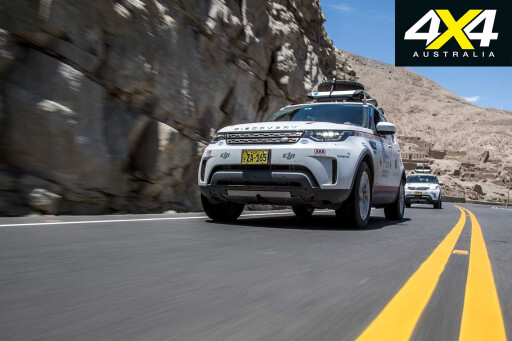 That sneak peek at the lower Andes has all of us pumped, as does the first couple of hours punching north up the motorway toward Cañete. The Discovery’s supercharged V6 is effortless in its ability to push the big rig along the motorway, accompanied by glimpses of the Pacific to our left.
That sneak peek at the lower Andes has all of us pumped, as does the first couple of hours punching north up the motorway toward Cañete. The Discovery’s supercharged V6 is effortless in its ability to push the big rig along the motorway, accompanied by glimpses of the Pacific to our left.
Surprisingly, the chunky Goodyear DuraTracs are relatively quiet; there’s little discernible tyre noise entering the cabin, which could also point to effective sound deadening. This is excellent on two levels: it means a quiet in-cabin experience for me and Gonzalo Raggio, my Peruvian co-driver; and it means my iPhone’s playlist of 80s/90s rock music is uninhibited. Sometimes, life is very good.
 We turn inland at Cañete and start our gradual ascent to the dry, dusty mountain country. Initially we follow a river valley, passing through a few towns and small villages, before it narrows into what is locally known as River Canyon, in the Yauyos Province.
We turn inland at Cañete and start our gradual ascent to the dry, dusty mountain country. Initially we follow a river valley, passing through a few towns and small villages, before it narrows into what is locally known as River Canyon, in the Yauyos Province.
The road surface alternates between sealed, gravel and dirt, with potholes becoming more frequent as we move further into the canyon.
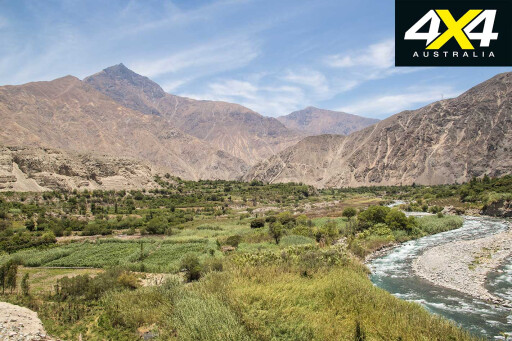 This part of the drive is incredible; the canyon walls are near vertical, as is the drop-off from the roadside to the wild river beside us. Needless to say, it is preferable to be the passenger through here, simply to be able to take your eyes off the road and enjoy the gigantic bronzed cliffs that shadow our ascent.
This part of the drive is incredible; the canyon walls are near vertical, as is the drop-off from the roadside to the wild river beside us. Needless to say, it is preferable to be the passenger through here, simply to be able to take your eyes off the road and enjoy the gigantic bronzed cliffs that shadow our ascent.
Confirming this region’s oft-wild weather, we are stopped, for the first time, by a road crew removing huge boulders that have dropped from above – the result of rain eroding the cliffs. Another hour on, we are stopped again, with more road crew resealing a torn-apart section of the road.
 The road itself is an amazing feat, cut through the canyon as it is, but equally worthy of admiration are the hard-working local road crews who must be out here most of the year fixing sections of this route.
The road itself is an amazing feat, cut through the canyon as it is, but equally worthy of admiration are the hard-working local road crews who must be out here most of the year fixing sections of this route.
Climbing out of the canyon, the terrain changes again. Bare, hard granite cliffs and mountains surround us as we drive above the tree-line into breathtaking vistas that reach across to barren peaks that seem to march close together toward the higher snow-clad mountains beyond.
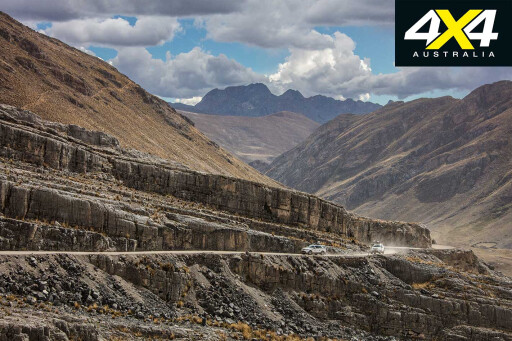 Our climb finishes at 4600 metres, showcasing how Peru’s landscape can change in what is a relatively small geographical area. It also reminds us of the harshness of altitude sickness; we’ve travelled from sea level to this height in roughly four hours and a few of our party are emptying the contents of their stomachs here, while the hardier of us wander around taking in the view and sucking in the very thin air.
Our climb finishes at 4600 metres, showcasing how Peru’s landscape can change in what is a relatively small geographical area. It also reminds us of the harshness of altitude sickness; we’ve travelled from sea level to this height in roughly four hours and a few of our party are emptying the contents of their stomachs here, while the hardier of us wander around taking in the view and sucking in the very thin air.
From this lofty viewpoint we drop down, crossing a landscape not dissimilar to the Scottish Highlands; alpine tarns dot the rolling hills and exposed rocky summits loom above. It’s an amazing contrast to the more rugged and dry western side of this mountain range.
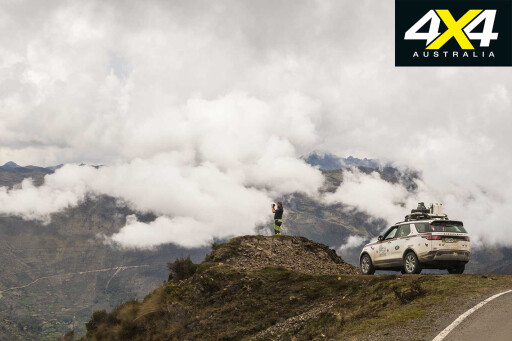 As we descend, signs of civilisation start to reappear, and we spot a few hardy shepherds and their flocks of alpaca as we get close – and then pass through – the town of Chaquicocha before reaching our overnight destination of Concepción and the welcoming Huaychulo Hotel.
As we descend, signs of civilisation start to reappear, and we spot a few hardy shepherds and their flocks of alpaca as we get close – and then pass through – the town of Chaquicocha before reaching our overnight destination of Concepción and the welcoming Huaychulo Hotel.
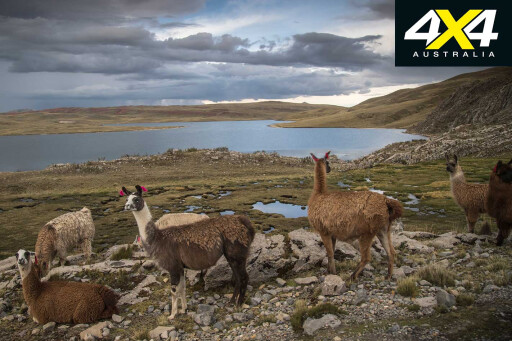 Looking at the route on our GPS – and allowing for its ability to show contour lines – it still doesn’t come close to showing how dramatic the day’s change in terrain was. From coastal resorts on the Pacific to deep river canyons and then Highland-esque vales, the route packed in just about everything. And Peru hadn’t finished with us yet.
Looking at the route on our GPS – and allowing for its ability to show contour lines – it still doesn’t come close to showing how dramatic the day’s change in terrain was. From coastal resorts on the Pacific to deep river canyons and then Highland-esque vales, the route packed in just about everything. And Peru hadn’t finished with us yet.
WELCOME TO THE JUNGLE
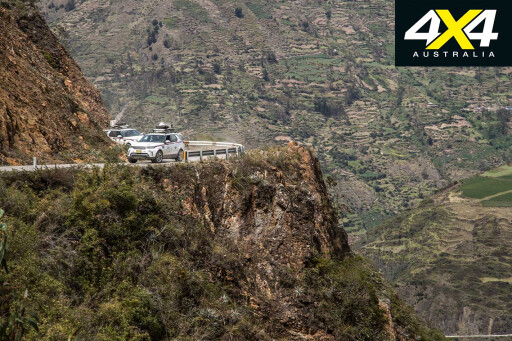 I am sitting in the Discovery driver’s seat all too aware that around one metre to my left is a vertical drop of – at a rough guess – at least 500 metres.
I am sitting in the Discovery driver’s seat all too aware that around one metre to my left is a vertical drop of – at a rough guess – at least 500 metres.
There’s not even a tree or rock in sight to break your fall – it is straight down. Magnifying awareness of our lofty position is the fact the ‘road’ (note the emphasis) is sealed, but only in the literal sense; the surface is close to being totally covered in potholes of varying depths.
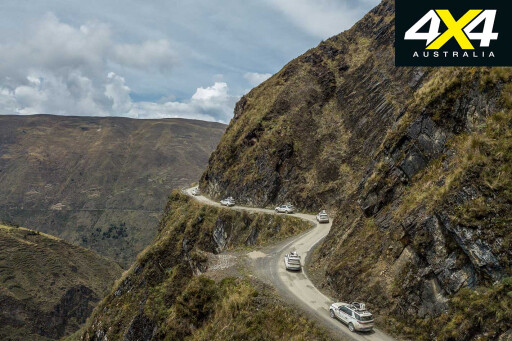 The Discovery’s tyres are thumping and bumping no matter how much I manoeuvre – always with that drop in mind. I am just thankful that I am not driving this road in my 2003 Td5 Disco. The new Discovery’s steering is doing a brilliant job of muting the bumps and vibrations through the steering wheel, allowing a modicum of accuracy as I carefully thread the potholed needle.
The Discovery’s tyres are thumping and bumping no matter how much I manoeuvre – always with that drop in mind. I am just thankful that I am not driving this road in my 2003 Td5 Disco. The new Discovery’s steering is doing a brilliant job of muting the bumps and vibrations through the steering wheel, allowing a modicum of accuracy as I carefully thread the potholed needle.
We had climbed steadily since the morning, reaching a beautiful alpine plateau at 4350 metres and passing by more shepherds and their flocks as well as three pristine alpine lakes: Pomacocha, Habasccocha and Jeronimo. After the plateau it was down to the town of Muchac, the following valley towns of Pomamanta and Layainiyoc, and then the Comas District, which signalled the start of our current cliff-side drive.
 Precarious road aside, the drive is exhilarating, with plenty to occupy the driver including swapping over to manual-shift mode – the rarefied air has affected the engines slightly and, for the best performance, shifting manually is the go.
Precarious road aside, the drive is exhilarating, with plenty to occupy the driver including swapping over to manual-shift mode – the rarefied air has affected the engines slightly and, for the best performance, shifting manually is the go.
There is plenty to see from up here: the valley below is patched with towns, terraced fields of different shades of green, and topped with the Andes’ ubiquitous jagged spires. After a blast across another high plateau, we drop down once again into a totally different landscape: the Peruvian jungle.
 The river valley is clad in dense vegetation, with the only breaks in the wall of green coming from the roaring waters of the Rio Pampa Hermosa and the dirt track we are following. It is bumpy with river-stone and washouts, and it is here we see just why one of the original sections of this LRE trip had to be rerouted.
The river valley is clad in dense vegetation, with the only breaks in the wall of green coming from the roaring waters of the Rio Pampa Hermosa and the dirt track we are following. It is bumpy with river-stone and washouts, and it is here we see just why one of the original sections of this LRE trip had to be rerouted.
Evidence of the volatile weather in this region is all along here, with landslide damage and the resultant holes in the road reminding us of the high rainfall this area cops.
Still, it is incredibly scenic, with the river gouging through the mountains to punch its way down the valley to our left, and, with the wall of trees and cliffs on our other side, it is true jungle country. The bumpy surface is just that, without being overly jarring.
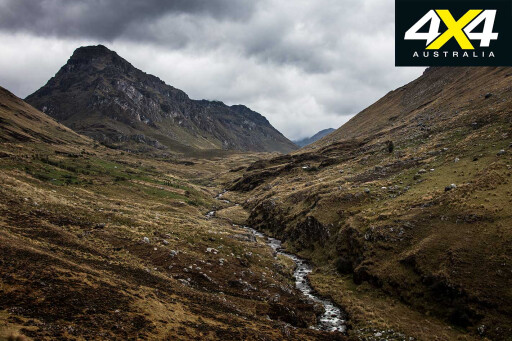 The more challenging part of this section is the clay-like surface covering said bumps and rocks – only a moment of inattention from me (okay, I was gawking at the view) sees a slight drifting scenario. The Disco’s traction and stability control, combined with a subtle steering correction and those grippy Goodyears, soon see the big bopper back on the track.
The more challenging part of this section is the clay-like surface covering said bumps and rocks – only a moment of inattention from me (okay, I was gawking at the view) sees a slight drifting scenario. The Disco’s traction and stability control, combined with a subtle steering correction and those grippy Goodyears, soon see the big bopper back on the track.
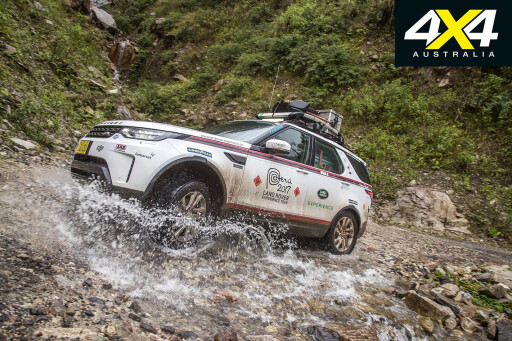 The bottom of the valley means a return to civilisation, and we time our arrival at the villages dotting our way to Satipo with school children returning from their long days of learning. These kids often travel two hours each way to school, by foot and on the bus.
The bottom of the valley means a return to civilisation, and we time our arrival at the villages dotting our way to Satipo with school children returning from their long days of learning. These kids often travel two hours each way to school, by foot and on the bus.
ALL GOOD THINGS MUST END
 A relatively benign sealed-road drive from Satipo, looping back around to Huancayo, signals the end of our journey. Even though relatively straightforward, this day’s drive still springs some unforgettable moments – the sight of a toddler aboard a tricycle, holding up our Discovery convoy as he gleefully hammers down a major highway, foot furiously pushing his trike to maximum speed and completely oblivious to the traffic behind, won’t be easily forgotten.
A relatively benign sealed-road drive from Satipo, looping back around to Huancayo, signals the end of our journey. Even though relatively straightforward, this day’s drive still springs some unforgettable moments – the sight of a toddler aboard a tricycle, holding up our Discovery convoy as he gleefully hammers down a major highway, foot furiously pushing his trike to maximum speed and completely oblivious to the traffic behind, won’t be easily forgotten.
Neither will the manoeuvring around, beside and (nearly) over the ubiquitous three-wheeled mototaxis in every town we drive through, or getting slightly lost on the last day just before lunch. I could try and blame Team South Africa for this one but, err, maybe I just shouldn’t have followed them down that one-way street – and, to be fair, it did look like the right way, one-way signpost be damned.

We cop plenty of stares – the Discoverys do stick out like the proverbial – but also plenty of smiles and waves, a reflection on the Peruvian people in general.
 Dodging through Huancayo’s heavy traffic, I still have time to reflect on what we’ve experienced. Peru’s amazing variety of terrain – desert, canyons, alpine plateau, and the jungle – and the different driving experiences in each, are a standout, as is the organisational skills of the LRE staffers. Local guide Juan Dibos, LRE leader Marvin Verheyden and the rest of the crew were absolutely brilliant, leading us through a country that would have to rate as close to the perfect touring destination.
Dodging through Huancayo’s heavy traffic, I still have time to reflect on what we’ve experienced. Peru’s amazing variety of terrain – desert, canyons, alpine plateau, and the jungle – and the different driving experiences in each, are a standout, as is the organisational skills of the LRE staffers. Local guide Juan Dibos, LRE leader Marvin Verheyden and the rest of the crew were absolutely brilliant, leading us through a country that would have to rate as close to the perfect touring destination.
Now all I have to do is wait, patiently, for a couple of years to see where the next Land Rover Experience lands – and somehow make sure the Editor is stuck in a planning meeting when that invite lobs in the 4X4 Australia office.
World's Best Job
 PLANNING driving reconnaissance missions and then leading Land Rover Experience journeys means Marvin Verheyden must have close to the best job in the world. Marvin has been involved with Land Rover Experience for many years and been heavily involved in the destination selection process, a process that can take up to 18 months.
PLANNING driving reconnaissance missions and then leading Land Rover Experience journeys means Marvin Verheyden must have close to the best job in the world. Marvin has been involved with Land Rover Experience for many years and been heavily involved in the destination selection process, a process that can take up to 18 months.
“Peru was already in our mind some years ago,” he says. “We were very excited when we recognised the variety of the country: desert, mountains, rainforest, and everything within hours by car.”
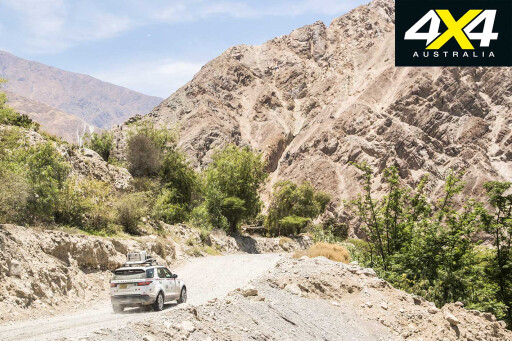 However, Peru threw up plenty of challenges because of this variety, with Marvin and the team requiring three recce trips due to heavy rains changing tracks. Even this Leg Three we were attending had to be altered due to the changing conditions.
However, Peru threw up plenty of challenges because of this variety, with Marvin and the team requiring three recce trips due to heavy rains changing tracks. Even this Leg Three we were attending had to be altered due to the changing conditions.
Then there were the vehicles. The new Discovery has just been released, so it was the obvious participant vehicle. Impressively, it required few modifications, according to Marvin.
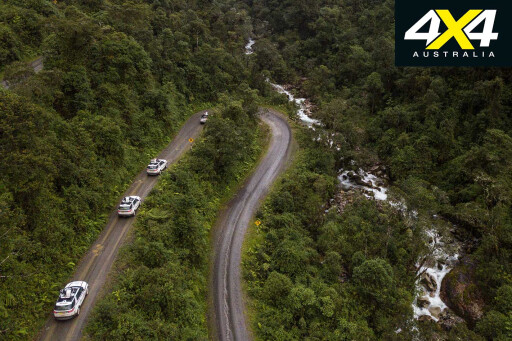 “We drove more or less with standard SE/HSE vehicles,” he says. “The only thing we changed was thicker underbody protection and the Goodyear DuraTracs. Each vehicle also got an ARB fridge, Garmin GPS and a 220V inverter, plus one spare tyre and two jerry cans up top.”
“We drove more or less with standard SE/HSE vehicles,” he says. “The only thing we changed was thicker underbody protection and the Goodyear DuraTracs. Each vehicle also got an ARB fridge, Garmin GPS and a 220V inverter, plus one spare tyre and two jerry cans up top.”
Tough Rubber
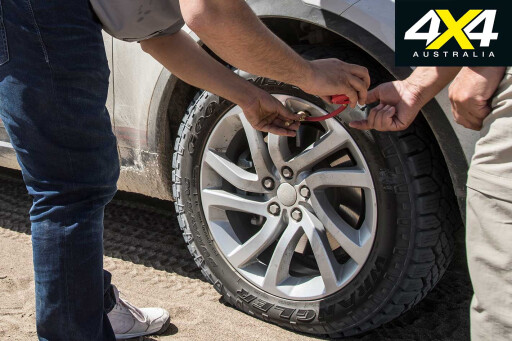 THE Discoverys were fitted with the all-new Goodyear Wrangler DuraTrac 255/55R20. The specific development of this tyre was the result of the close working relationship Goodyear has with Land Rover; the tyre company first fitting its rolling stock to Range Rovers in the 1970s.
THE Discoverys were fitted with the all-new Goodyear Wrangler DuraTrac 255/55R20. The specific development of this tyre was the result of the close working relationship Goodyear has with Land Rover; the tyre company first fitting its rolling stock to Range Rovers in the 1970s.
Typically, a tyre can take between two and three years to develop, from concept drawing through to the final product. Alex Van Der Meer, OE Engineer for Goodyear, elaborates.
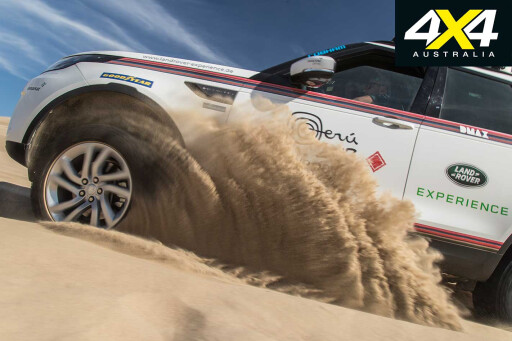 “Land Rover sent us their requirements, such as off-road capability, in the case of the DuraTrac. And a team of our engineers worked with them to create their tyre of choice... areas of focus for this development included reinforced tread and sidewall compound and belt package.”
“Land Rover sent us their requirements, such as off-road capability, in the case of the DuraTrac. And a team of our engineers worked with them to create their tyre of choice... areas of focus for this development included reinforced tread and sidewall compound and belt package.”
The tyre cops plenty during development; up to 200 test drives across a variety of terrain, on top of 400-plus lab tests, means a tyre will roll through 300,000 test kilometres.
Goodyear’s goal was to produce a low-aspect ratio off-road tyre that combined effective off-road performance without sacrificing on-road. On-road they were relatively quiet; although, this could be a reflection of the excellent NVH of the new Discovery, while off-road they offered plenty of traction and toughness.
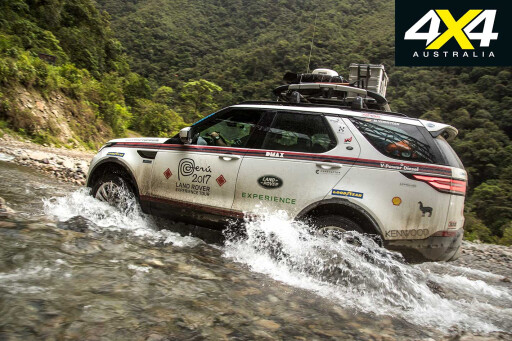 Longer-term testing is needed to confirm performance in regards to durability, but on first impressions these tyres would warrant serious consideration for fitment upon purchase. These tyres are now available in Australia and add to the very short list of all-terrain/mud-terrain tyres that will fit 20-inch rims.
Longer-term testing is needed to confirm performance in regards to durability, but on first impressions these tyres would warrant serious consideration for fitment upon purchase. These tyres are now available in Australia and add to the very short list of all-terrain/mud-terrain tyres that will fit 20-inch rims.
Are You Experienced?
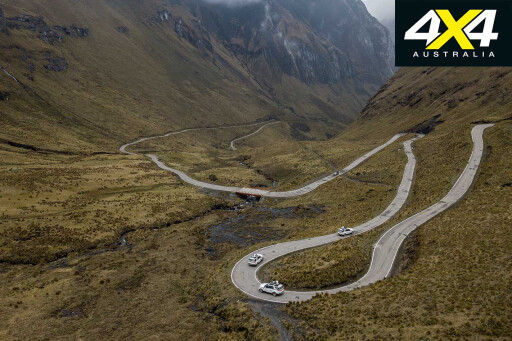 THE LAND Rover Experience (LRE) is open to any and all paying punters – you don’t have to be a Land Rover owner, you just have to share that same spirit of exploration and adventure that is the LRE ethos. For 2018, LRE has two awesome destinations that would tempt any off-road tourer: Utah, USA, and Namibia, western Africa.
THE LAND Rover Experience (LRE) is open to any and all paying punters – you don’t have to be a Land Rover owner, you just have to share that same spirit of exploration and adventure that is the LRE ethos. For 2018, LRE has two awesome destinations that would tempt any off-road tourer: Utah, USA, and Namibia, western Africa.
The Utah adventure is a five-day exploration of one of the USA’s most spectacular states, with plenty of challenging off-road driving including taking on the Seven Mile Rim and Hells Revenge trails, with LRE drive instructors on hand to offer tips and advice. All accommodation, driving, meals and airport transfers are included in the US$5250 pricing. Hit up their site here for more info.
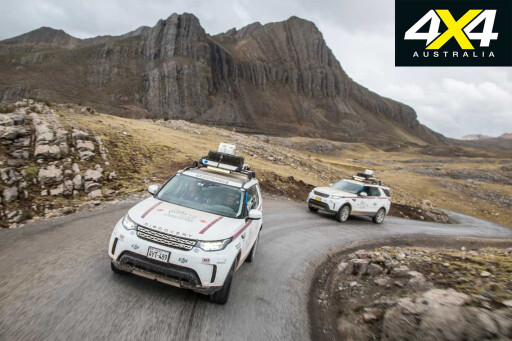 For that epic African adventure, Namibia is one of the best destinations, with the LRE eight-day adventure offering punters the chance to spot the “Big Five” (elephant, rhino, leopard, lion and Cape buffalo) as you explore some of this country’s famous national parks, including Etoshi, while driving an all-new Discovery (as with Utah, LRE drive instructors are part of this trip). Speccy lodge accommodation is also part of the package.
For that epic African adventure, Namibia is one of the best destinations, with the LRE eight-day adventure offering punters the chance to spot the “Big Five” (elephant, rhino, leopard, lion and Cape buffalo) as you explore some of this country’s famous national parks, including Etoshi, while driving an all-new Discovery (as with Utah, LRE drive instructors are part of this trip). Speccy lodge accommodation is also part of the package.
This eight-day adventure costs EU4950 and includes all Land Rover driving activities, accommodation, meals and airport transfers. For more info and booking, visit the Land Rover site here.

COMMENTS